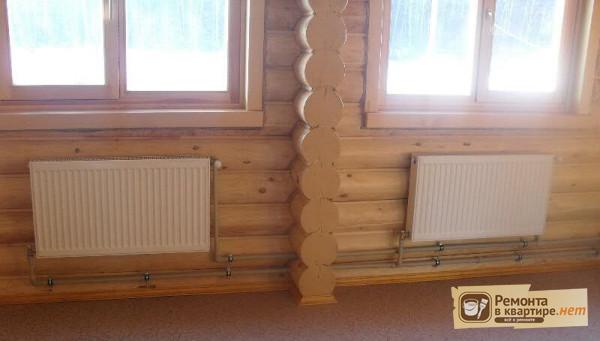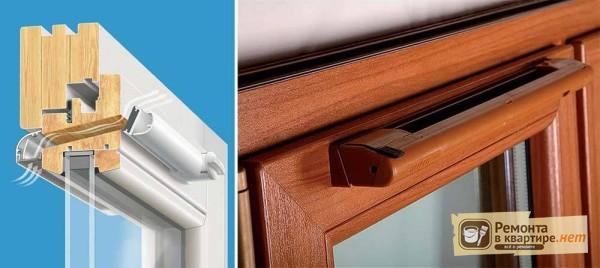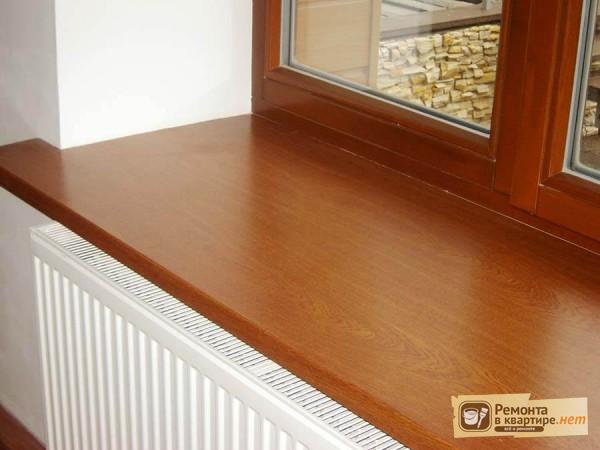Why do wooden windows in the house sweat, and what to do with condensate?
Whether wood or plastic, natural materials advocates emphasize the well-known drawback of plastic structures, which is fogging. Going into a rage, environmentalists sometimes attribute the fogging effect to the properties of PVC itself. However, to the counter question why modern wooden windows sweat, there is nothing to say. However, this is a fact.
- Dew formation mechanism
- Causes of dew formation
- Ventilate more often
Dew formation mechanism
To understand why wooden windows sweat, you need to go back to school knowledge of physics. Water vapor is always present in the air, and its content differs from room to room. As the temperature rises, the air can hold more and more moisture. When a cold object is brought into the room, the air around it begins to cool, and its relative humidity increases. Eventually, excess moisture condenses on the cold surface of the object in the form of dew. Wetter air requires less temperature difference to start dew formation. At almost 100% humidity, water will settle on all surfaces that are even slightly colder than air.
For different values of humidity, there are different temperatures for the formation of condensate, which in physics are called dew points. If the object brought into the room has a temperature below or even equal to the dew point, then it is covered with dew. The dew point is highly dependent on humidity levels and temperature.
So, we found out that the main reason why the wooden windows in the house sweat is the humid air in the room.
Causes of dew formation
The fact is that the very question of why wooden windows sweat is posed incorrectly. Because both wooden and plastic frames never sweat, at least no one has seen it yet. Frame material has nothing to do with it. Under certain conditions, any, for example, Finnish expensive wooden window will fog up in the same way.
Three factors collectively or individually affect the formation of condensation on glass: cold air outside, high humidity and a double-glazed window with poor thermal insulation.

In winter and autumn, together with shoes and clothes, we bring a lot of water and snow into the house, which saturate the air and the windows begin to “cry”. At the same time, the wooden structure of the window absorbs the flowing condensate, swells and practically ceases to open normally.
An increase in the humidity of the indoor atmosphere due to washing and drying clothes, work in the kitchen leads to the immediate appearance of dew on the coldest surfaces in the room, which are usually window panes.
The presence of numerous indoor plants on the windowsills and blackout curtains on the windows are other reasons for windows to fog up.
Why do old wooden windows often do not "cry"? Due to its structure and condition:
- Old wooden frames have many actively blown slots. If, in the fight against them, such a window is carefully caulked, then it will fog up in the same way, since the temperature difference will increase, and air circulation will worsen.
- In addition, old windows have two frames separated by an impressive space that acts as a buffer. If you bring the frames together or leave one at all, then the thermal insulation will decrease. It turns out that only double wooden windows do not get wet.
What to do so that wooden windows do not sweat?
Ventilate more often
![]()
Moisture enters the air during cooking, wet cleaning, drying clothes and our breathing.
With normally functioning ventilation, the humidity in the home remains normal, but if there are problems with it, drops of condensate on the windows will signal that it is time to ventilate the room.
But if you have to constantly ventilate the rooms, then you should check and adjust the operation of the ventilation system (clean the ventilation ducts in the toilet, kitchen and bathroom, supply them with fans).
Install the correct windows

It is worth thinking about replacing the double-glazed window, because even the best wooden windows with the wrong choice of double-glazed windows will not be able to “work” for you at full “power”. When choosing it, one should take into account the desired humidity and air temperature in the room, as well as climatic features.
When ordering a window, you should request a double-glazed window for it that fully meets the wishes of the customer. It is useful to fix the requested characteristics in the contract, and if the company begins to resist, then it is better not to deal with it. Unfortunately, more often than not, we don't do this, and as a result, condensation appears on wooden windows.
Remove anything that obstructs air circulation
In order not to let a cold draft into the home, the owners, when repairing wooden windows, intensively caulk all the cracks, some even think of using mounting foam for this. This significantly worsens the air exchange between the street and the house, and the question of why the wooden windows in the house sweat, and what to do about it, becomes even more acute. By placing a barrier to the penetration of cold, but containing less absolute moisture than internal air, we disrupt their circulation, which will inevitably lead to accumulation of moisture in the internal atmosphere and its deposition on the glass and swelling of the frames.
In the upper part of a tightly “sealed” window, you should definitely remove the mounting foam and the sealing profile and observe the change in the state of the glass for several days. If condensation remains on the windows in a wooden house, then you should continue removing the foam and sealant until the frames and glass are dry.
A very bad option would be to try to dry the windows with something like a fan heater - this cannot be used on an ongoing basis.
Organize proper heating

The reason for the formation of dew on the glass of the windows may be poor operation or incorrect installation of heating radiators. For example, wet wooden windows cannot be dried completely unless heating is installed near them. In any case, sooner or later, the radiator should be moved under the window in order to organize the correct air circulation in the room with simultaneous heating of the window glazing. Otherwise, the stagnation of cold air near the window will cause constantly “weeping” windows.
Do not turn on the gas stove for additional heating
The entry of moisture into the air of a dwelling can be due to both internal and external factors. It is highly undesirable to heat your home with a gas stove. This is not at all harmless to health, since the burning gas actively draws oxygen from the air, releasing instead a large amount of water vapor, carbon dioxide, as well as a very dangerous carbon monoxide CO, known as carbon monoxide. Combustion products fill the apartment, making its atmosphere unhealthy and forming condensation on all relatively cold objects. Therefore, such a method of heating without emergency reasons should not be used, so as not to harm health.
Eliminate other factors-causes
Dew formation can also be affected by:
- The presence of ventilation valves on the windows. If ventilation valves are provided in the window design (usually at the top), then they will also prevent fogging, since the cool air entering through them will sink down, helping to maintain convection near the inner glass.

- Window sill width. Since a battery is usually located under the window, it heats it, and a window sill that is too wide prevents this. With free convection, rising warm air will heat the window and carry away excess moisture.

- Material, type and arrangement of curtains. The curtain along the window can become a kind of barrier that prevents temperature changes.
 Masonry mortars for brick kilns
Masonry mortars for brick kilns Why do the windows fog up in the apartment
Why do the windows fog up in the apartment Construction and schemes of brick ovens
Construction and schemes of brick ovens How to lay paving slabs: tips and tricks
How to lay paving slabs: tips and tricks How to drill bathroom tiles
How to drill bathroom tiles Monolithic slab on coarse soil
Monolithic slab on coarse soil Which electric heater is economical
Which electric heater is economical